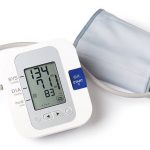The ONE organ responsible for high blood pressure.
Understanding The Significance of Blood Pressure Ranges

What are the new blood pressure guidelines for seniors?
The new guidelines don't change anything if you're younger than 60. But if you're 60 or older, the target has moved up: your goal is to keep your blood pressure at 150/90 or lower. If you have kidney disease or diabetes, your goal used to be 130/80 or lower; now it's 140/90 or lower.
What does a blood pressure reading look like?
When you measure your blood pressure, you get two numbers, an upper and a lower number.
Systolic blood pressure. This is the first, upper number. This is the highest level that the blood pressure reaches when the heart beats, forcing blood flow around the body.
Diastolic pressure. The second number, or bottom number, is the lowest level the blood pressure reaches when the heart is resting between beats.
What do these readings mean?
- 140/90mmHg or higher - you may have high blood pressure Most doctors use 140/90mmHg as the cutoff point for a diagnosis of high blood pressure (hypertension). This is the point at which your risk of serious health problems increases. Doctors may prescribe medication and advise you to change your lifestyle to lower your blood pressure.
- 120/80mmHg to 140/90mmHg - prehypertension Also called high normal blood pressure. This is not high blood pressure, but it is slightly higher than it should be and means you may be developing high blood pressure. See how you can make healthy changes in your lifestyle to lower it.
- 90/60mmHg to 120/80mmHg - ideal blood pressure Also called normal blood pressure. Your blood pressure reading is healthy. At this level, you have a much lower risk of heart disease and stroke. Living a healthy lifestyle will help you keep it in a healthy range.
- 90/60 mmHg or less - you may have low blood pressure Low blood pressure is usually not a problem, but sometimes it can make you feel weak or dizzy, or it can be a sign of another health problem.









